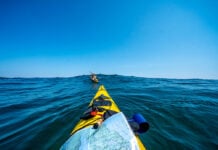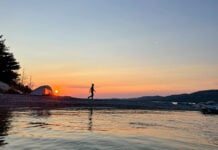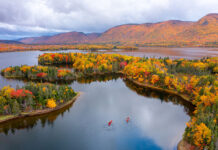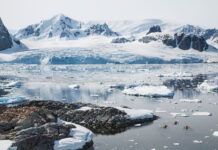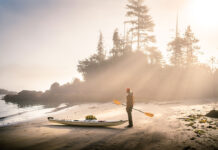I recently had the rare experience of getting away for a solo weekend kayaking trip. Rare because responsible and gainfully employed fathers of young children do not just go away on solo trips in the wilderness—it’s not like the wilderness gives you anything concrete to justify your reasons for going there.
It just so happened that I got two nights off work, conveniently planned way in advance to coincide with the kids’ camp. I had not quite three days, from the camp drop off to pick up two days later—exactly 55 hours, 12 of which were to be spent driving to a suitable sea kayaking destination.
Tallying the benefits of a solo weekend kayaking trip
Day one was a hot stinker in the city. I did the final sunscreen application on the kids and said goodbye to their bewildered faces (“You’re going kayaking without us?” they asked). Then I had to grocery shop to leave the family provisioned, walk the dog to leave him fully worn out, and clean the house to leave things well organized and not exacerbate the selfishness of my absence. Then I used another chunk of my precious time to actually pack, because I’d been too busy to do it earlier.
My vacation was already 10 percent over when I finally embarked, drenched in sweat in our battered minivan with the broken AC, heading into the city’s rush hour crawl. I was angry at the traffic and how many hours had already passed, but I arrived at my drive-in campsite well before sunset, and immediately washed away my frustrations by jumping off a cliff into the lake and eating my prepared-salad-in-a-box dinner overlooking the rolling hills.
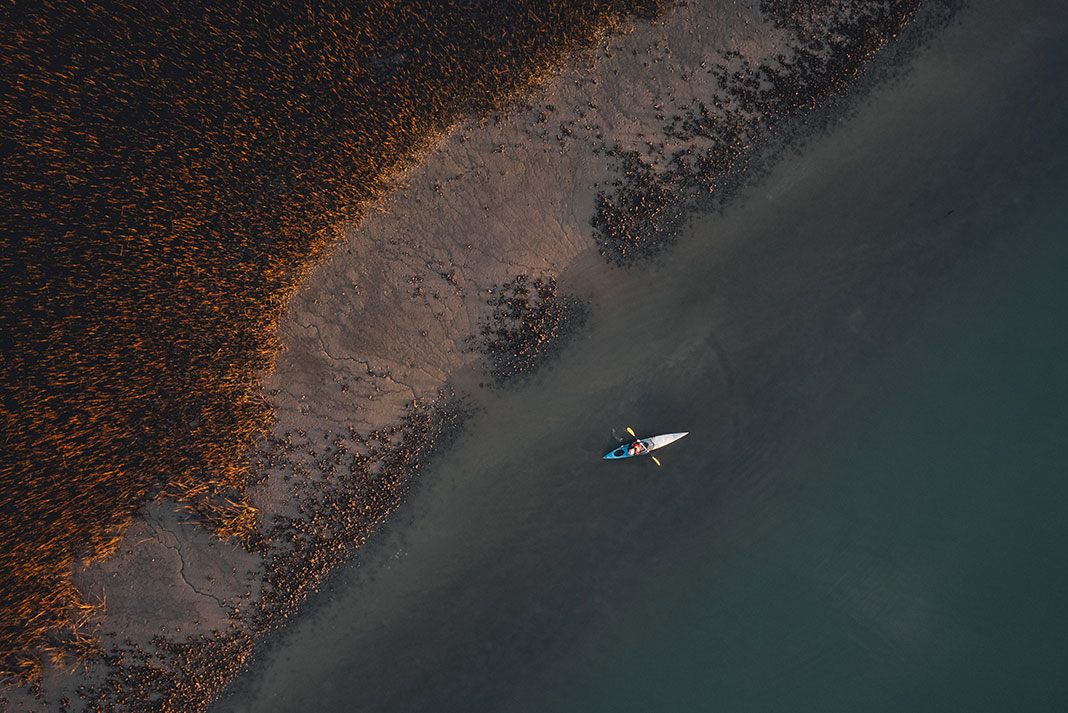
First came an onslaught of things I wanted to do to maximize my limited time. Swim! Eat! Drink beer! Light a fire! Roast a sweet potato! Paint a picture! Take a selfie! Read the newspaper! Call my wife! Charge the iPhone! Look at the maps! Get to bed early! Such is the frenzy of a trip’s beginning, before the mind settles down.
True relaxation started on day two when I packed up early and paddled into Georgian Bay, so pleased, as always, by how neatly everything fits inside the kayak. I swear I could love kayaking without paddling a stroke, just through the joy of packing and unpacking and sitting back to admire my boat in all its compact utility.
I quickly learned I was not alone. As it turns out many magazines, like this one, have named Philip Edward Island one of the best places on the planet to paddle, which de facto makes it less true. However, the beauty of this ice-, water- and wind-shaped landscape was undeniable, and traveling alone makes it easy to slip between the crowds.
I camped on an expanse of granite with my tent and kayak nestled beneath a pine tree, nearly invisible. Then a tour group pulled in next door, making as if to stay. I made a big show of myself, like one would to scare away a bear. I paced up and down the rock on made-up errands, clattering pots and shaking out large flapping objects as if to dry them. Then I hunkered back down and watched the group paddle away.
Sometimes we take solitude for granted
My last solo trip was more than a decade ago. At the time I took aloneness for granted. I lived by myself, and my life was awash in privacy and freedom. Today I migrate between family and work—a cramped fire station populated by eight to 10 people. Both families and firefighters move everywhere in packs, and this doesn’t suit my personality.
The Georgian Bay solitude struck me like water in the desert, a deep peace of no pressing interruptions or finding new emergencies. I swam in solitude, taking great thirsty gulps as I went. That day I had spent several hours paddling, exploring small islands—I saw a bear grazing berry bushes on the outside of one—and climbing lookouts to take in great distances, surfing wind waves into my campsite. Come evening, I was sitting on the smooth Georgian Bay granite, thinking and doing practically nothing, watching the stars come out one by one. The experience felt infinite, like I would always have enough.
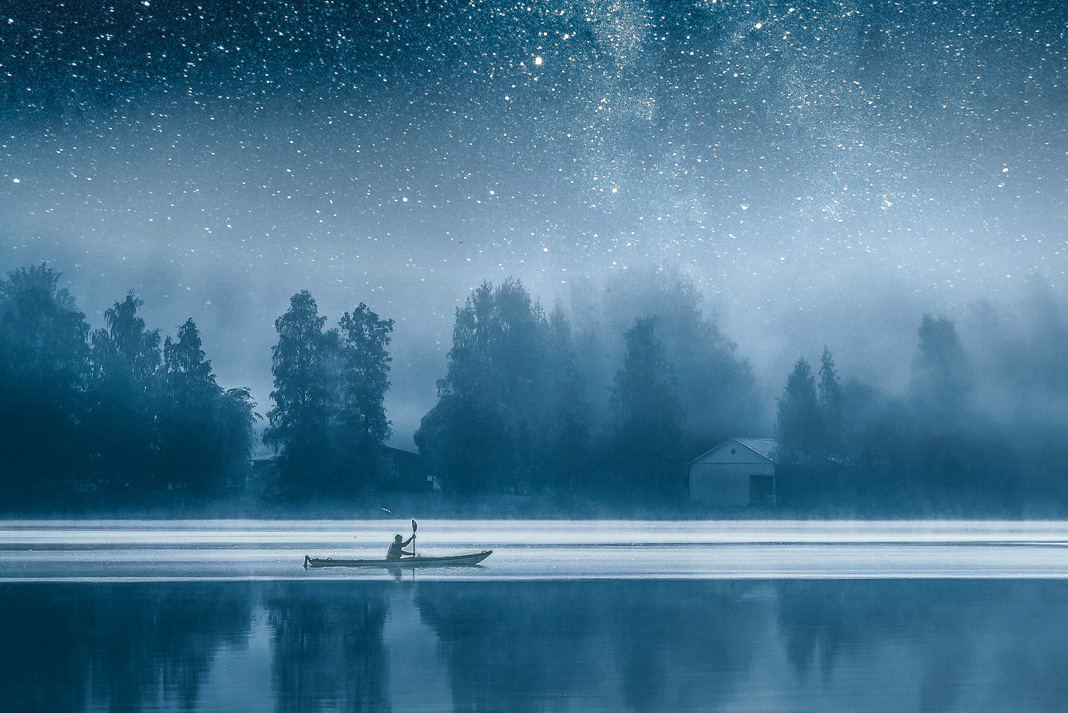
In the morning, I was already scheduled down to the minute to pick up the kids. I contended not with rush hour traffic, but with picking my way through rocky shoals while trying to read a map. And when in my distraction I abruptly ran aground, leaving a white cloud of gel coat in the water, nobody flipped me the bird and I didn’t have to get out to exchange drivers licenses and insurance. I just laughed at myself and jumped out for a swim before pushing my boat free.
Back home I acted noticeably slower, like I’d been away traveling for months in rural Tibet. “Wow, are you ever relaxed!” my wife commented, both impressed and exasperated at my sudden inability to process the glut of information and requests she was dumping on me over dinner. The subtext: “Okay, you had your vacation, now get with the program!”
“It’s like you’re on a different planet!” For just those few hours, I was. I felt like I was indeed on a planet, not wrapped up in a city or a house, but under the blue sky on the round earth, listening to the breath of wind in the boughs of the white pine and the sound of water lapping on rocks and checking out far off things and having far off thoughts.
Short trips can still lead to big benefits
Though the wilderness portion of my trip boiled down to literally just 24 hours sandwiched between long bouts of bustling around, that solitude contained an intimation of infinity that more than made up for the short duration. I didn’t need to be out for long. I just needed to be reminded that there was more than enough time and solitude out there somewhere, just abiding, no matter how harried my home days might be. It’s a place I can access in meditation, or just a moment of deep breathing while sitting in traffic.
I’m reminded of a friend who once told me wilderness is his touchstone. I talked to a canoe builder recently who got a distant look in his eyes when discussing properly long wilderness trips. “It takes me at least three weeks to really settle in,” he told me. “Then everything just clicks. You sleep better, you breathe better, your eyesight is sharper, your mind is sharper.” But I swear I got there in just a couple of days.
On a solo weekend kayaking trip, the possibilities—and the stars—seem endless. | Feature photo: Lauri Lohi



